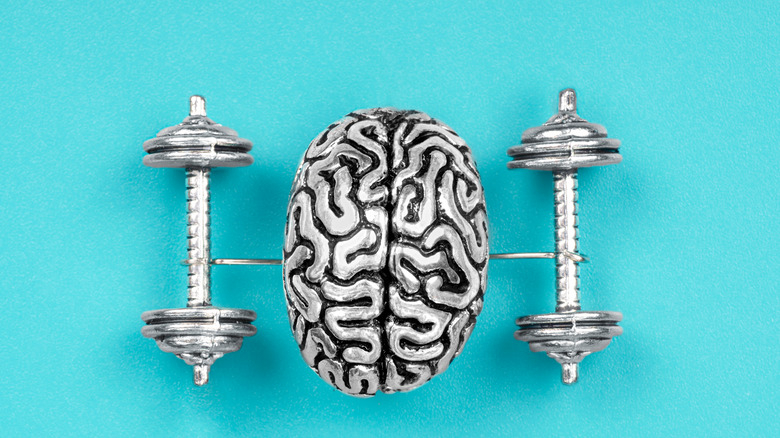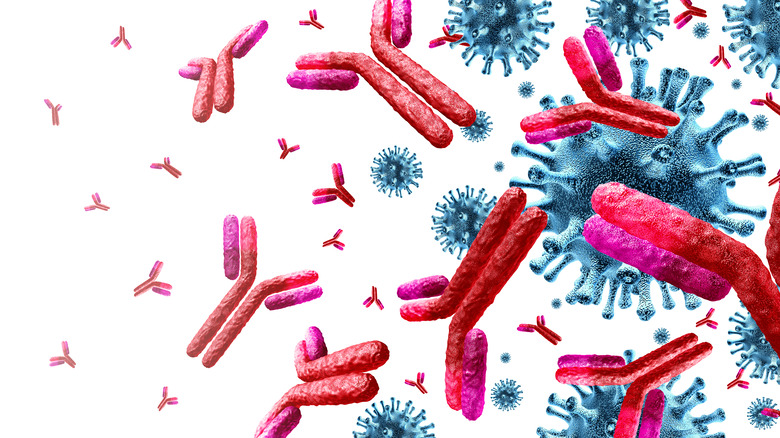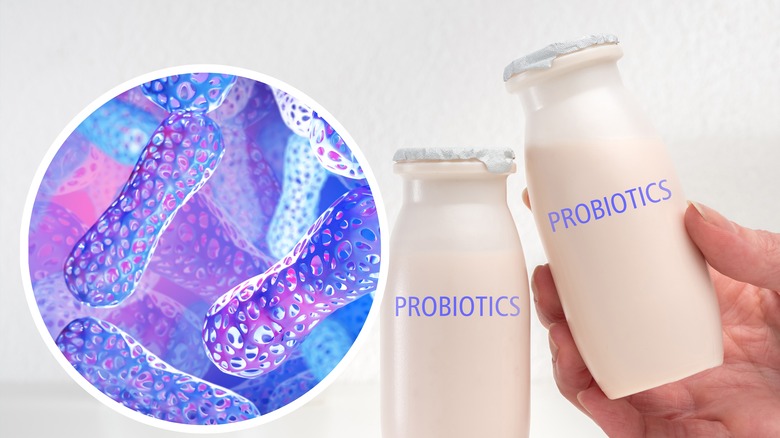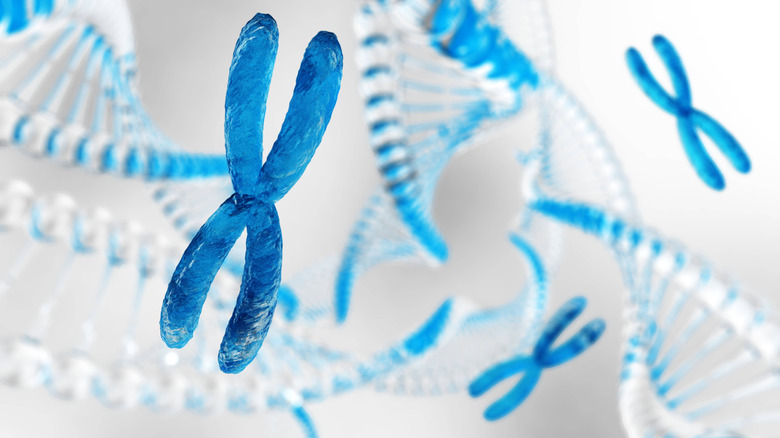Why Lactic Acid Is Actually Good For You
As described in a 2021 study published in the Yeungnam University Journal of Medicine, lactic acid is a substance formed in the body as a byproduct of the metabolism of carbohydrates. However, lactic acid cannot exist in the body in its intact form. It immediately breaks down into lactate and hydrogen ions. Therefore, while the terms lactate and lactic acid are used interchangeably, lactate is the correct term. Lactate production markedly increases during disease states (e.g., sepsis, asthma, autoimmune disease, and cancer) as well as during high intensity exercise.
The acidosis (muscle burn) and fatigue associated with intense exercise has been traditionally attributed to overproduction of lactate. However, it now turns out that lactate is not actually the villain it's been made out to be. Rather than being a waste product that causes muscle fatigue and soreness, it is now recognized that lactate is a major fuel source that is always being produced in the body (via a review of studies published in Cell Metabolism).
Increasing evidence suggest that lactate also acts as a signaling molecule that communicates with various cells and tissues, resulting in diverse effects such as wound healing, immune regulation, improved exercise performance, and suppression of inflammation. A third function of lactate is to help regulate blood sugar levels by serving as a precursor molecule from which glucose can be made in the liver.
Other benefits of lactate include appetite suppression, improved brain health, creation of new energy-producing mitochondria, and enhanced metabolic flexibility — the body's ability to easily switch between burning carbs and burning fats (via a 2021 review of studies in the Journal of Physiology).
The myth that lactate causes muscle fatigue and soreness
The misconception that lactate is the direct culprit behind the muscle fatigue resulting from intense exercise continues to resonate among athletic trainers and athletes, reports Berkeley News. This assumption is based on the fact that intense exercise causes lactate levels in the blood to soar. However, research over several decades led by George Brooks, at the University of California (Berkeley), has debunked the persistent belief that lactate is nothing other than a metabolic waste product and poison.
The high lactate levels generated by intense exercise are actually part of the "body's repair process" to respond to the stress of exercise; they are not the cause (via Berkeley News). This stress response also applies to the elevated levels of lactate that occur during other stress conditions such as illness or trauma. The notion that lactate is indirectly responsible for muscle fatigue through the development of acidosis is also a fallacy (via a 2012 study in Current Sports Medicine Reports). On the contrary, when lactate is produced, acidic protons (H+) are used up and "acidosis is inhibited."
Another mistaken belief is that lactate causes delayed onset muscle soreness (DOMS), notes the American College of Sports Medicine "but lactic acid is not a component of this process. DOMS appears to be a side effect of the repair process that develops in response to microscopic muscle damage." Delayed soreness often peaks between 24-72 hours after completion of an exercise session and is unrelated to lactate. Apparently, DOMS develops as an adverse effect of the body's attempt to repair microscopic damage to muscle fibers engaged by the exercise.
Lactate as a fuel
As noted in a review of studies published in the journal Redox Biology, lactate is the preferred fuel for muscles during exercise. According to the lactate shuttle concept, lactate is shuttled among cells that make lactate and cells that consume lactate. For example, some of the lactate produced in muscle as a result of intense exercise is released into the circulation and shuttled to the heart and brain where is it is used preferentially over glucose as a fuel. In fact, compared with glucose, the heart and brain function more efficiently when powered by lactate (via Berkeley News).
Exercise-generated lactate is also burned in muscle mitochondria to be reused as an energy source for the working muscles, as described in a review of studies published in a 2016 edition of Biology. Intense exercise increases the number of transporter molecules (known as monocarboxylate transporters, or MCTs) that shuttle lactate into the mitochondria. Thus, intense exercise enables a person to take in and burn more lactate to fuel the body. Lactate also bolsters energy reserves by serving as a precursor molecule for the manufacture of glucose in the liver (gluconeogenesis) and the restoration of glycogen in muscle.
Lactate as a signal
Lactate mediates many of the favorable adaptations (e.g., improved brain function, muscle growth) driven by exercise through its role as a signaling molecule, according to a 2016 review published in the journal Biology. A number of these adaptations are brought about by the lactate-induced increased production of PGC1-alpha — a protein that acts as a key regulator of energy metabolism through, in part, the creation of new energy-producing mitochondria. For example, per a study in a 2014 edition of the journal Metabolism, PGC1-alpha, through increasing glucose uptake by muscle after exercise training, likely contributes to the restoration of glycogen stores that are used up by the exercise. PGC1-alpha also increase angiogenesis (the formation of new blood vessels), thereby delivering more nutrients to muscle in mice.
This stimulation of angiogenesis by PGC1-alpha also benefits other areas of the body, having been observed in other organs such as the heart and eyes. PGC1-alpha also protects against the development of age-related conditions (in studies with mice) such as muscle atrophy (sarcopenia) and mediates the anti-inflammatory effects of exercise as well. As described in a 2020 review of studies in the journal Redox Biology, lactate as a signaling molecule affects the expression of hundreds of genes related to "chronic diseases and conditions such as diabetes, sepsis, and wound healing." The recognition that lactate signaling is uncontrolled in certain disorders such as cancer underscores the important role of lactate in improving and maintaining good health.
Lactate enhances muscle growth and regeneration
Evidence from a 2016 review of studies published in the journal Biology suggests that lactate may also play a role in muscle growth and regeneration. In experiments utilizing a cultured line of rat skeletal muscle cells, lactate was shown to activate anabolic (growth) signals and to induce muscle stem cells (precursor cells) to develop into mature muscle fibers. Interestingly, in one of these studies published in a 2014 edition of Stem Cell Research, the addition of antioxidants such as vitamin C negated these effects, suggesting that lactate exerts its effects through the generation of free radicals. That being so, ingesting antioxidant supplements (which destroy free radicals) before or after exercise could undermine the beneficial adaptations associated with training. In another study, lactate stimulated production of the anabolic hormone testosterone in cells from rat testes.
Animal studies also support the anabolic properties of lactate. Oral administration of lactate in mice was demonstrated to increase muscle mass as well as regenerate muscle in a mouse model of muscle injury (via a 2019 study published in the journal Nutrients). Moreover, per a 2020 animal study in the International Journal of Environmental Research and Public Health, lactate was shown to increase the production of factors that promote protein synthesis in muscle. In particular, activation of mTOR — a key regulator of skeletal muscle mass — was significantly increased. Further research to support the potential use of lactate as a dietary supplement for muscle health is recommended.
Lacate improves brain function
In a 2019 study published in The Journal of Neuroscience, lactate has been identified as a key "exercise factor" responsible for the beneficial effects of exercise on brain health. The enhancement of learning and memory through regular exercise is well documented. It is also established that these effects of exercise are mediated by BDNF (brain-derived neurotrophic factor) — a key protein in the brain that improves cognitive performance and helps fight depression. Lactate generated through exercise is released by muscle into the blood and transported across the blood-brain barrier into the brain where it signals an increase in the production of BDNF. Thus, lactate links exercise to increased BDNF and improved cognitive functions such as learning and memory.
Apart from this signaling function, lactate also serves as an important fuel for the brain (via a 2017 study published in the Proceedings of the National Academy of Sciences of the United States of America). In a rat model of prolonged exhaustive exercise, muscle glycogen (stored carbohydrate) was depleted while glycogen stored in brain cells was only decreased. Lactate derived from the breakdown of brain glycogen fueled the brain to maintain energy levels during exhaustive exercise, and thereby sustained endurance capacity. Lactate also fuels neurons to regulate "memory formation," thus complementing its role in memory enhancement as a signaling molecule via BDNF.
Lactate suppresses appetite
While it is well-established that exercise temporarily reduces levels of the hunger hormone ghrelin and suppresses appetite, high-intensity exercise causes greater reductions in ghrelin and appetite that last for hours after the exercise, reports a 2020 review of studies published in the American Journal of Physiology-Endocrinology and Metabolism. This finding supports a role for lactate in mediating exercise-induced appetite suppression since high intensity exercise generates higher blood levels of lactate than low intensity exercise does. Bouts of "all-out" sprinting for 30 seconds prompted the largest increase in blood lactate and decrease in ghrelin and appetite, which persisted for 90 minutes after the interval training session.
Sprint interval training was also associated with a 15% lower calorie intake (vs. non exercising controls) for the remainder of the day. Intravenous infusion of lactate in both humans and animals, continues the 2020 review, has also been shown to reduce calorie intake, though the increase in blood lactate levels was modest compared to the lactate response following acute exercise. Potential mechanisms for the lactate-mediated appetite suppression following exercise include blocking the release of ghrelin from stomach cells and inhibiting ghrelin signaling in the brain.
Lactate's ability to suppress appetite may also involve the gut microbiota, notes a 2021 review of studies in the Journal of Physiology. Ghrelin is not only produced in the stomach but throughout the gastrointestinal tract as well. In addition to exercise-generated lactate, lactate is also produced by the gut microbiota. This lactate made in the bowel combines with high amounts of blood lactate from exercise transported to the bowel and weakens the hunger signals from ghrelin.
Lactate improves heart function
As explained in a 2021 review published in the journal Frontiers in Nutrition, lactate is the main energy source fueling the heart muscle during conditions (e.g., exercise) in which the heart is stressed. In healthy people at rest, the heart primarily runs on the energy burned from fats (fatty acids) while a smaller portion of the heart's fuel is provided by carbohydrates (glucose). But as the heart pumps harder during physical exercise, a shift in fuel sources for the heart muscle occurs as the use of glucose increases while blood lactate levels rise. As the exercise intensity increases, lactate becomes the dominant fuel because it is preferred over glucose. Moreover, the burning of fat for fuel is suppressed by signaling from lactate.
Lactate is also a very important energy source for people with acute myocardial ischemia, heart failure, and diabetes (high risk to heart disease), per a 2021 study published in the journal Frontiers in Physiology. In fact, in a randomized, controlled clinical trial, infusion of lactate improved cardiac performance in critically ill patients with acute heart failure (via a study published in a 2014 edition of the journal Critical Care).
Lactate improves wound healing
Lactate accumulates in a healing wound and contributes to the healing process, reports a 2017 review of studies published in the journal Physiology. The use of supplemental lactate to speed up the healing process shows promise in the treatment of non-healing wounds. Lactate may potentially be leveraged as a strategy to speed up tissue repair in conditions such as burns, diabetes, and peripheral artery disease, notes a 2012 study in the journal Angiogenesis. Lactate delivered topically and systemically to mice was shown to accelerate healing of skin wounds and ischemic (caused by blocked blood flow).
The effects of lactate involved the stimulation of angiogenesis (creation of new blood vessels) which restored blood flow to the ischemic wound and also prevented muscle atrophy. Lactate also triggers the synthesis of collagen in connective tissues (e.g., cartilage, bone, tendon), which improves wound healing (via a 2021 review of studies published in the journal Medicina).
Lactate regulates immune function
According to a 2021 review published in the journal Frontiers in Immunology, lactate plays an emerging role as a signaling molecule that regulates diverse functions of immune cells. Dendritic cells and macrophages are specific types of immune cells that suppress chronic inflammation as well as induce immune tolerance so that the body does not attack its own cells, thus preventing autoimmune disease.
At the same time, as part of the healing process, these cells also elicit potent inflammatory immune responses that are fueled by the burning of glucose (glycolysis) which in turn causes increased lactate production. As a negative feedback signal to prevent excessive inflammation, exposure to lactate reprograms these cells so that they predominantly produce anti-inflammatory effects. This reprogramming activity by lactate involves reduced glycolysis and increased burning of fat in the mitochondria.
In animal models, continues the review, the anti-inflammatory effects of lactate have been shown to be protective in hepatitis and pancreatitis. Lactate-containing solutions are currently being investigated as potential therapies for these pro-inflammatory conditions (via a 2018 review of studies published in the journal Cell Metabolism).
Lactate improves gut health
As described in a 2015 article published in the journal Frontiers in Microbiology, lactate produced by fermented dairy foods may contribute to the health benefits of these foods. Yogurt contains about 0.9% lactic acid whereas kefir, another fermented dairy food, clocks in at close to 2% lactate. Fermented foods containing probiotic microorganisms can protect against pathogen infection in the gut by suppressing their growth and by blocking their ability to colonize the intestines. Fermented foods also favorably alter the intestinal microbiota, which is vital for the function and integrity of the gastrointestinal tract. As a result, metabolites produced by the gut microbiota (e.g., short-chain fatty acids) exert anti-inflammatory effects in the gut.
While lactate is a major metabolite produced by bacterial fermentation of foods, it is also produced by lactic acid bacteria found in the gut. In mice with chemically induced colitis, lactate was demonstrated to prevent intestinal damage and inflammation as well as bacterial translocation — i.e., the migration of bacteria from within the gastrointestinal tract to sites outside of the intestines (via a 2016 study in the journal Frontiers in Immunology). Lactate has also been shown to suppress proinflammatory responses of various immune cells.
Lactate regulates gene expression
The DNA in the cell's nucleus is wrapped around a core of proteins called histones, reports Science Direct. Histones can be modified with the addition of marks or tags such as methyl groups (DNA methylation). Consequently, the expression of a gene (segments of DNA) is activated (turned on) or silenced (turned off). As explained in an article published in a 2019 edition of the journal Nature, histones can also be modified by a process called lactylation, which involves the addition of lactyl groups from lactate and is dependent on lactate production from the breakdown of glucose (glycolysis).
Thus, lactate-driven modification of histones linking the processing of food into chemical energy (energy metabolism) to gene regulation may play important roles in health and disease. Lactate has been demonstrated to regulate gene expression in a variety of cells and tissues including muscle cells, colon cancer cells, glioma (type of brain tumor) cells, mesenchymal stem cells (stem cells that develop into tissues, e.g., bone, cartilage, and muscle), and immune cells such as macrophages and T cells (via a 2018 study published in the journal Frontiers in Molecular Neuroscience).












